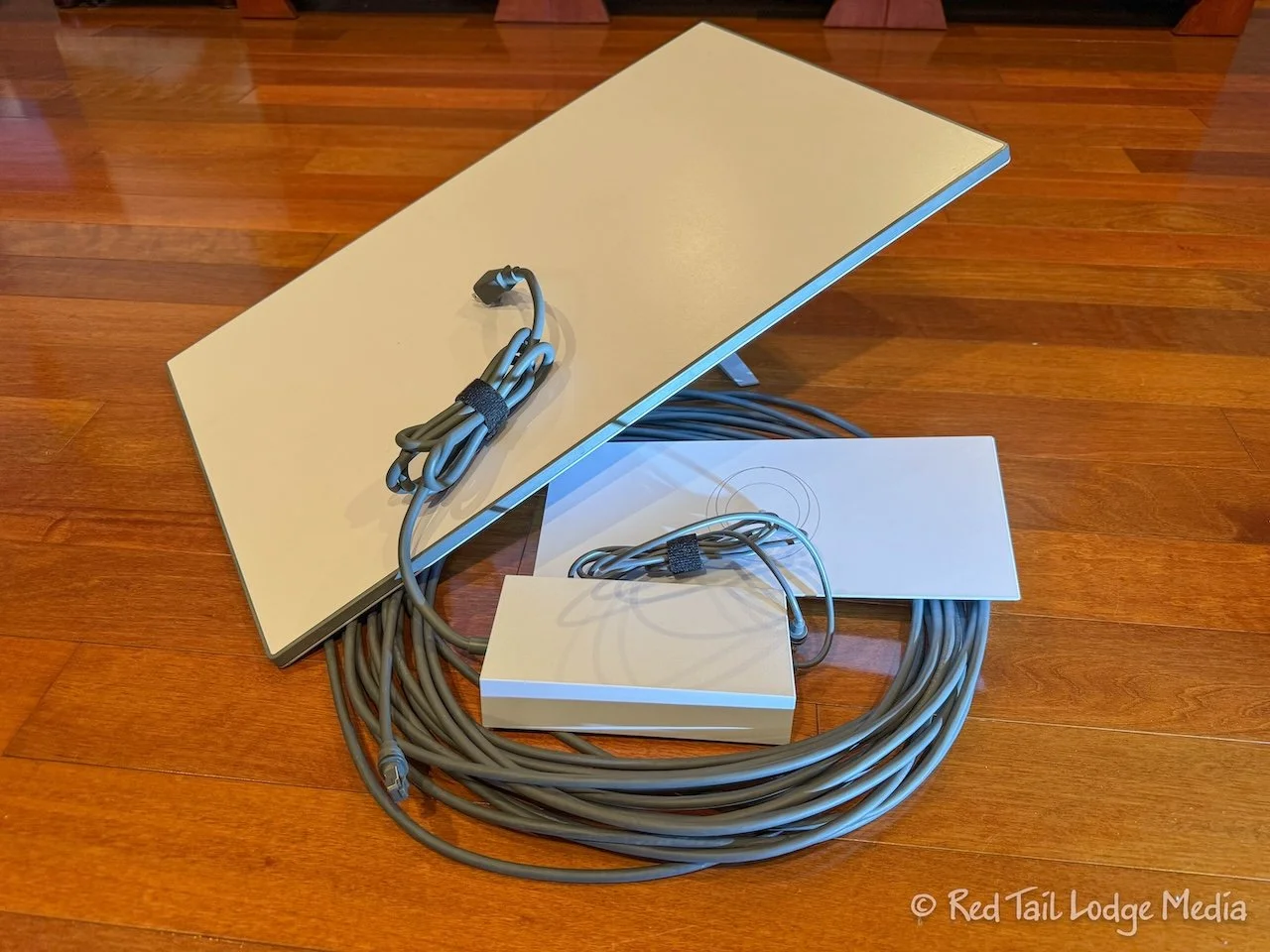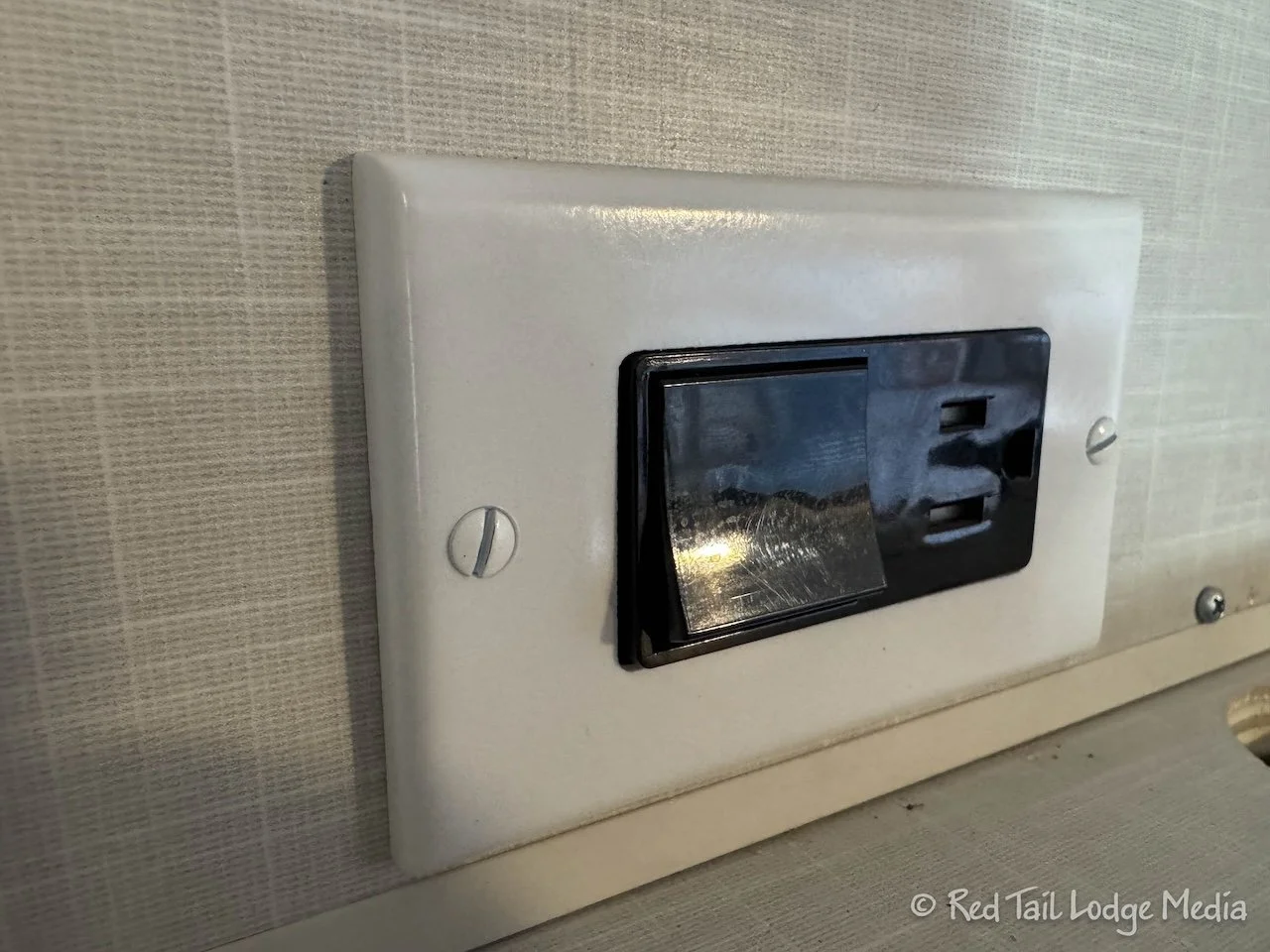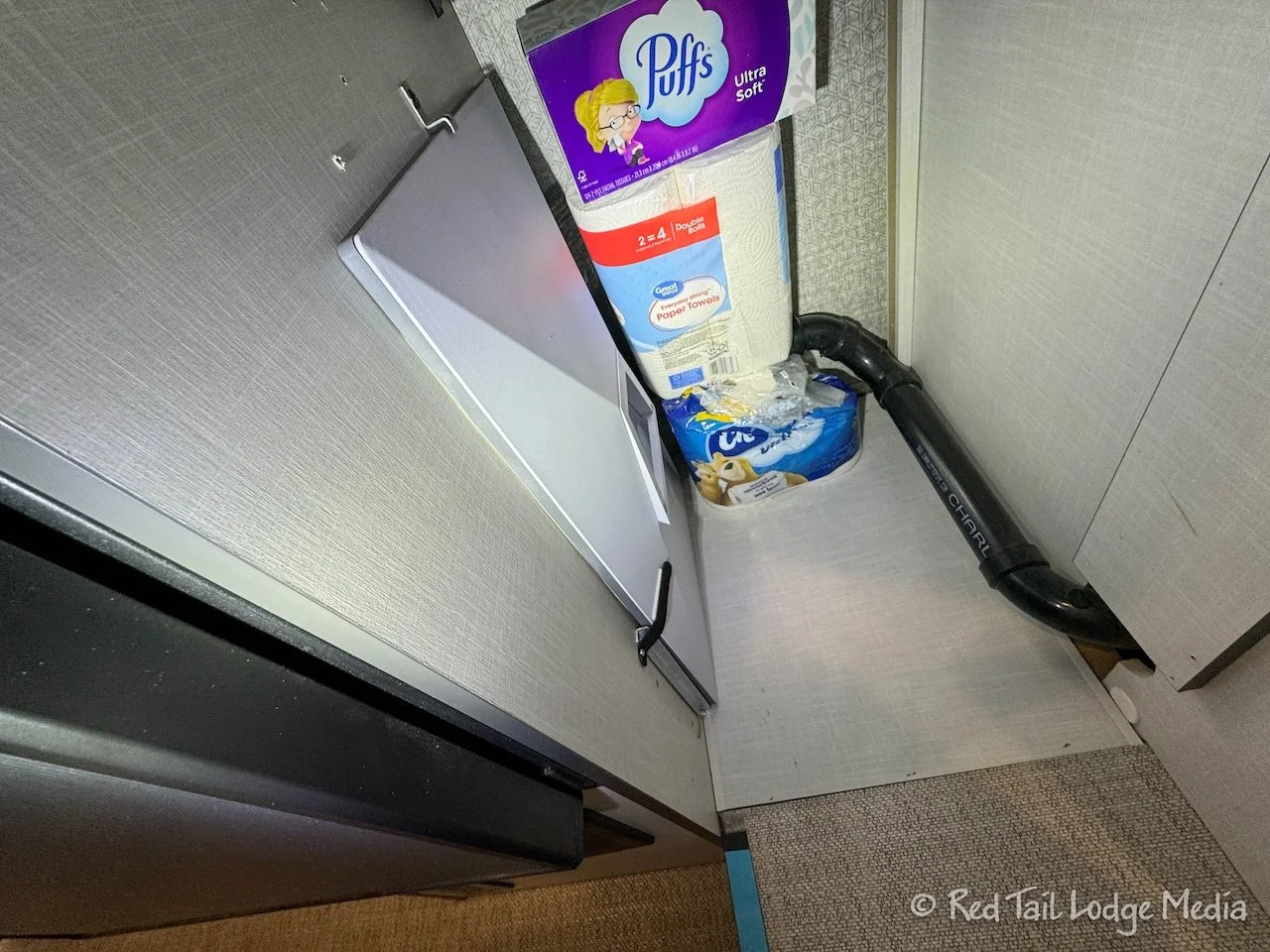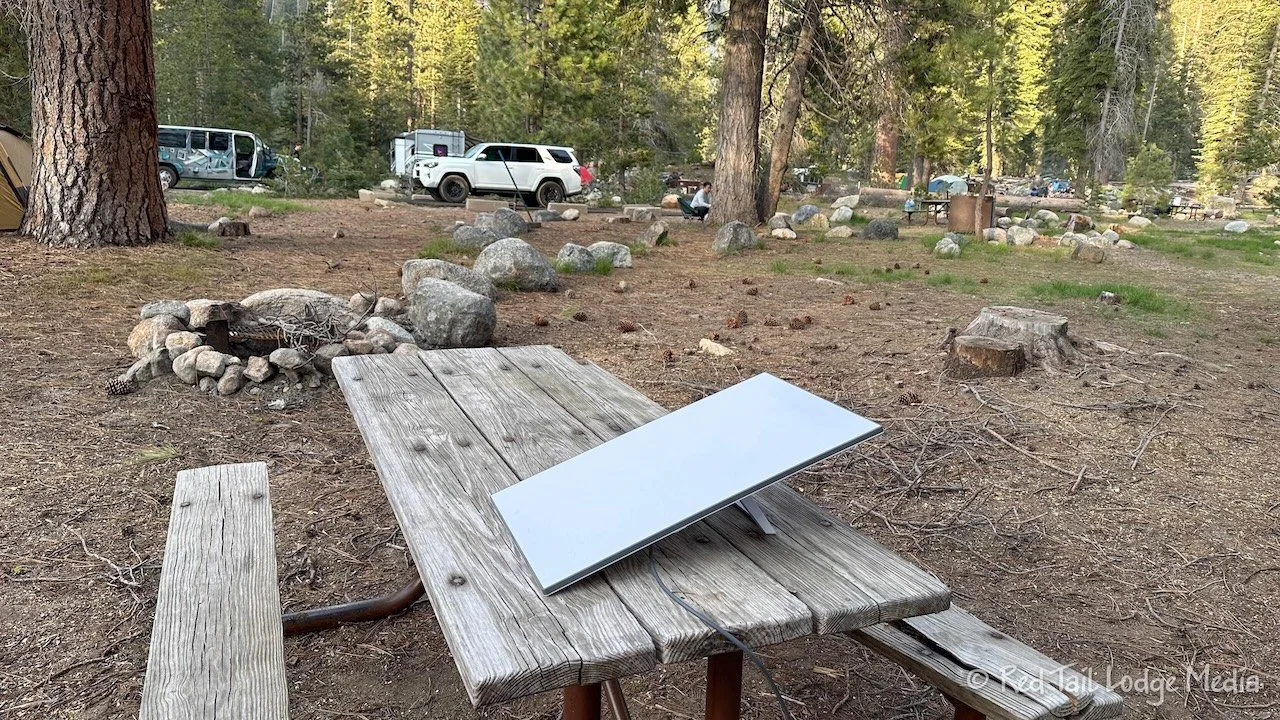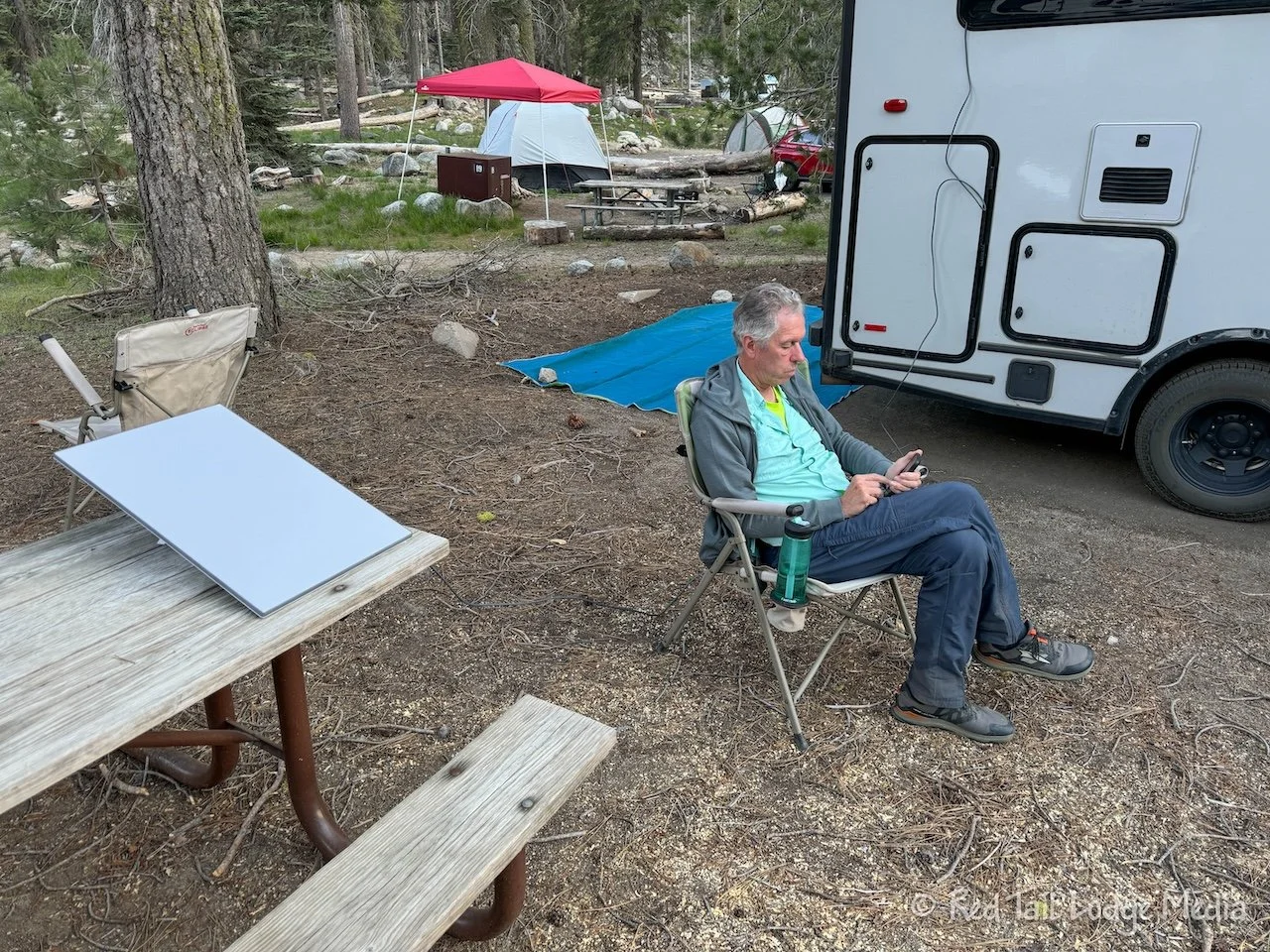Our Starlink Experience
We added Starlink during our Season Six travels in 2024. We’re sharing our experience with Starlink in hopes that you might find the information useful.
How we setup Starlink in our EKKO
Why we got Starlink
During Season Six, Keith got tired of our poor internet connections. Several places at the start of the season didn’t have good cell service. Our old 4G Verizon Jetpack (paid link) kept dropping the connection on us. We knew that Starlink was only good if you had a good view of the sky, so it wouldn’t do us much good when camping in dense woods, but we knew it would be great when we were out of the trees. So less than a month into the season, we ordered Starlink and picked it up at a nearby Best Buy.
How we setup Starlink in our EKKO
There are several options and plans with Starlink, and it seems like they are constantly changing. We bought the standard kit, which included the standard dish, kickstand, Gen 3 Router, Starlink cable, AC cable, and the power supply. It took us a while to figure out how to get it set up inside of our Winnebago EKKO.
We mounted the router and power supply on the wall between the bedroom upper cabinets, using a wall mount kit (paid link). Then we ran a cable from there, through the passenger side bedroom cabinet and up through the roof port.
At the roof port, we attached a waterproof ethernet connector (paid link).
There is no switch on the power supply or router. You just plug it in and unplug it to turn it on and off. Since the outlet sits behind a couple of other items sitting on the shelf, we changed the outlet to a switchable outlet. Flipping a switch is much easier than taking the plug in and out. The switch allows Starlink to be plugged in all the time.
A 50 foot cable was connected to the roof port, with a waterproof shielded coupler (paid link) on the other end. This is the cable that we connect to the dish. We either lay the dish on the roof of the EKKO or lay it on the ground, depending on where the best view of the sky is. We don’t use Starlink while in motion, so we don’t need to secure the dish in any way.
The 50 foot cable is coiled up and attached to the ladder on the back of the EKKO with twist ties. We leave the cable connected to the roof at all times and only unwind the amount of cable needed, depending how far away we need to place the dish. When we are not using Starlink, we detached the 50 foot cable from the dish and close the end up inside the shielded coupler to keep the connector clean and dry.
The dish is stored inside the EKKO. It fits nicely in the open cabinet below the passenger side bed, where we store our laundry basket. The dish slides alongside the laundry basket. A bracket at the top kept the dish from flopping over and a metal angle kept the dish from sliding back out. We originally also had a piece of velcro to hold it in place, but the adhesive of the velcro didn’t like to stay on the dish and kept falling off. The velcro turned out to not really be needed anyway.
What we like about Starlink
Starlink is fast. We got much faster speeds with Starlink than with our cell signals, even with the weBoost (paid link) turned on. Even if the Starlink signal would periodically drop, the speeds were so fast when it was connected, that we normally didn’t notice that the signal dropped, due to buffering. However, we don’t do video calls or online meetings where signal dropping would be more noticeable. We are usually just uploading data, downloading data, or searching for info online.
The Starlink router has a much larger range than our Verizon Jetpack and the weBoost transmitter. We could be quite a distance from the EKKO, like the far side of a large campsite and still have a powerful signal from the Starlink router, with not much degradation of the signal. That is not something we could do with our Jetpack or weBoost. For those, if we were outside the rig, we needed to be pretty close to the entry door for a good signal.
If we couldn’t get a good view at our camp site, we usually could drive a short distance to find a parking place with a good view of the sky. Usually, if we didn’t have a good cell signal, we were not sure how far or where we needed to go to find a good cell signal.
What we don't like about Starlink
The price. The standard kit was $650, not counting all the other parts we bought, such as the wall mounting kit and waterproof connectors. We signed up for the Starlink Roaming plan. The plan started out as $150 per month, but went up to $165 per month for unlimited data in October of 2024. Hot spotting through our phones (AT&T) doesn’t cost us anything above our normal cell phone plans, although, on our plan, hot spotting is limited to 60 GB per month per phone. Our Verizon Jetpack is on an old grandfathered plan of unlimited data, costing us $65 per month. We don’t remember what we paid for the Jetpack, but they currently go for around $100.
It takes more time to get Starlink set up than using either our phone hot spots or our Verizon Jetpack. We have to get the dish out, connect it to the cable, then wait for it to find a satellite, and sometimes reposition the dish for a better connection. So if we had a good cell signal, we wouldn’t get the Starlink dish out.
Starlink draws a noticeable amount of power from the batteries. The dish can draw anywhere from 45 Watts (when idle) to 150 Watts (when active). We got in the habit of turning it off when we didn’t need it, especially at night and when we left the rig during the day. It was another good reason to have it plugged into a switchable outlet, making it easier to turn on and off. However, turning it back on requires the dish to regain a signal, which is not instantaneous.
Why we removed Starlink
After we returned home from Season Six, we canceled our Starlink plan and removed it from the EKKO. The only thing we left in was the cable running from the bedroom up to the roof port. Why? Were we that unhappy with Starlink? Well, no. Our plans for Season Seven in 2025 is to travel to Europe, without our EKKO. So we’ll be putting the EKKO in storage for about a year to a year and a half. Since we won’t be needing Starlink for a year and a half, we didn’t want to be paying for it during that time. We could have just paused the plan, but Starlink is changing so rapidly, that we thought it would be better if we sold our Starlink standard kit and wait until 2026 to see what the technology evolved into by then.
We also canceled our Verizon Jetpack, giving up our grandfathered plan. Check back in 2026 to see what we end up with. If you want to know what the latest internet connection options are for travelers, we recommend checking out Chris and Cherie of Technomadia and their Mobile Internet Resource Center. They stay on top of all of the latest changes and test out all of the latest gear. We will be checking back with them in 2026 in order to figure out what our next internet set up will be.
If you are contemplating Starlink, we hope you found this post informative. Do we think Starlink is the perfect solution for all RVers? No, but it is a very good piece to help you stay connected. We don’t see it as a single solution, but just one important tool in our internet connection toolbox, along with other tools. But it depends on your internet needs and where you like to camp. We hope you find the right solutions for your situation.
Check out our related video: Our Starlink Experience
(Ann)



